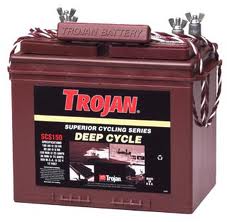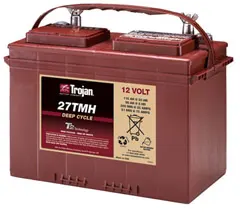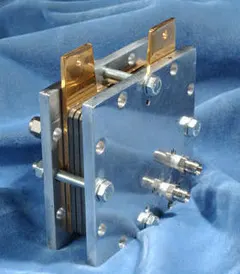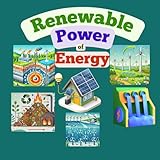
Energy Storage
Energy Storage is the Key to a Renewable Energy Future
![]() Our use of energy helps drive our modern world, by putting petrol in our cars, food in our stomachs, and batteries in our toys because nearly everything we use in our world needs energy of some form to make it happen and until we discovered the many uses of electricity, there wasn’t much need for Energy Storage.
Our use of energy helps drive our modern world, by putting petrol in our cars, food in our stomachs, and batteries in our toys because nearly everything we use in our world needs energy of some form to make it happen and until we discovered the many uses of electricity, there wasn’t much need for Energy Storage.
Back in the day our usage of energy was direct by burning coal, wood or through the use of waterwheels to power mills or pump water when we needed it. But today the world has become an increasingly energy-hungry place, and this constant and growing demand for electrical power requires that we find new ways to not only generate energy but also to store energy.
Energy storage is also a vital part of all the natural processes here on Earth. The storage of energy in one form or another for later use has been extremely important not only to mankind but also to virtually every other form of life.
As humans we store energy in the form of chemical structures, such as carbohydrates and sugars in our bodies when we eat. This energy once stored, is slowly released over time which enables us to survive and function for long periods between meals. Without this energy storage, life would not be possible.
But as well as life, energy storage is a key component in any sustainable energy system. Fossil fuel resources such as coal and petroleum are becoming not only more scarce in some areas but also increasingly inaccessible and costly to extract.
But luckily for us, the Earth has been blessed with an abundant supply of natural resources and we have developed many different types of renewable energy system to convert the abundant energy from the sun, the wind, rivers and the oceans into electrical power.
But what happens when the sun does not shine, the wind does not blow or the oceans tides reach their highs and lows, and this free energy is not available, then we have to find ways to economically save the generated power for later use. Although energy cannot be created or destroyed, it can be saved in various forms, for example, chemical storage in a battery. This is referred to as stored energy, and it is energy storage that will play a critical role in an efficient and renewable energy future.
When the term “energy storage” is used, most people think about the storage of electricity in batteries, but the ability to store energy from a primary source for later use is important in many situations, especially when that primary source of energy is from an uncontrollable and variable source such as solar or wind. The term “storage medium” is the energy reservoir that retains the potential energy within a energy storage device for later use.
There are many ways in which we can store energy, such as: electrochemically (batteries, fuel cells), electrically (capacitors, magnetic energy storage), mechanically (flywheels, springs, hydraulic accumulators), potential gravity (hydroelectric dams, river flows), and thermally (molten salt, steam, bodies of water) to name a few, and each with its own set of energy storage advantages and disadvantages.
There are two main reasons why energy storage is important and why it will grow with the increased development of renewable energy sources are:
- Many important renewable energy sources are intermittent, and only generate when the weather dictates, such as wind and solar, so the storage of energy provides a way of adjusting to variations in the energy demand
- Many transportation systems require energy to be stored and carried with the vehicle either in the form of a battery to start the engine, battery banks for electric vehicles or fuel cells to propel a vehicle in its different modes of operation.
Energy storage is an important component in any sustainable energy system with the types of energy storage media that can take and release energy in the form of electricity have the most universal value, because electricity can efficiently be converted either to mechanical or heat energy. The most common way of energy storage for later use is by using batteries.
Storage Batteries

Electrochemical batteries are the most common energy storage device in use and still the predominant means of energy storage in many off-grid and sustainable energy systems.
This is because batteries, by definition are portable sealed systems that store electrical energy in the form of chemical energy, and when electricity is needed, the chemical energy is converted back to electrical energy.
Batteries are capable of having high energy conversion efficiencies making them ideal for use in not only transportation but also in home based alternative energy systems.
The lead–acid battery is one of the oldest and most mature battery energy storage technologies. In its basic form, the lead–acid deep cycle battery consists of a lead (Pb) negative electrode, a lead dioxide (PbO2) positive electrode and a separator to electrically isolate them. The liquid electrolyte is usually dilute sulphuric acid (H2SO4), which provides the sulphate ions for the discharge reactions, but improved maintenance free gel-type batteries with a solid silica electrolyte are now becoming popular.
In the battery charging process, DC electric power either from conventional or renewable energy sources is stored in the active chemicals of the battery system to their high-energy, charged state under the influence of some form of the battery charge controller. Both the power and energy capacities of lead-acid batteries are based on the size and geometry of the electrodes and proper recharging is important to obtain optimum life from any lead-acid battery under any conditions of use.
But keeping energy storage batteries fully charged day in and day out to ensure a ready supply of electricity is available when needed is a high priority that requires a fair amount of electricity. That’s because batteries self-discharge when sitting idly by. To overcome some of these problems in electric vehicles, a kind of “super battery”, called a fuel cell was developed.
Storage Fuel Cell
The fuel cell is another type of electrochemical energy storage device which converts the stored chemical energy of a common fuel (Hydrogen Energy), an oxidant (Oxygen), and an electrolyte sandwiched between them within a single cell directly into electrical energy.
When the demand for electricity arises, the stored hydrogen is is passed over the anode (negative) and oxygen from air is passed over the cathode (positive), and with the use of a catalyst (platinum, nano-iron powders, palladium), a chemical reaction takes place and electrons flow through an external circuit to produce electricity. Hydrogen Fuel Cells are now being used to power vehicles.

A fuel cell does not produce any pollutants when supplying energy, only heat and water as a by-product, and being similar to batteries have no moving parts making it a very clean energy storage solution.
Therefore, theoretically it should be possible to obtain a reliability of over 99% in ideal conditions which is good as the cost of a fuel cell compared to a battery is very high.
Although energy storage fuel cells can produce DC power, fuel cells are mostly associated with providing the fuel for cars and other forms of transportation by using the electrolyser to separates water into oxygen and hydrogen using electricity as a way of storing energy. Then the fuel cell uses two different processes for the cycle of energy storage, production and use.
The advantage that fuel cells have over batteries for transportation is that the process is completely clean because when you burn the hydrogen directly in a vehicle engine, the only waste you get out is heat and water, no carbon dioxide, or other harmful emissions. Thus, feeding hydrogen into specially designed engines can power a clean-burning vehicle.
Fuel cells produce a constant power source through chemical reactions, like a conventional battery, but from a stream of fuel and many different fuels can be used, including natural gas and gasified biomass as well as hydrogen. However, where does the hydrogen fuel come from. Producing, storing, liquefying and transporting the hydrogen gas to where it is needed all requires energy to do so. Also, while the hydrogen gas can be burned in an engine, it is not as efficient as running it on gasoline.
Energy Storage is a key component in any sustainable energy system and the need for energy storage is evident by the intermittent ability to produce electricity from certain renewable energy devices. Of course, renewable energy systems such as wind, solar (solar photovoltaic (PV) and solar thermal), biomass, hydroelectric, ocean and river currents, waves, and tides, do not have to be grid-tied, but going off-grid means additional costs for battery backup because some of these are considered to be intermittent sources, when energy storage is absent.
Although electricity cannot be directly stored, it can be easily stored in other forms, for example, chemical energy and converted back to electricity when needed and as such there are a wide range of different technologies available that can be used for electrical energy storage, from batteries, to fuel cells, to super capacitors.
Batteries of different chemical compositions provide flexible options that can be used at scales from a few watts to power mobile phones up to several kilo-watts (kW) to drive electric vehicles, making them suitable for a wide range of off-grid and transportation applications. Also, electric vehicle batteries that are no longer suitable for use in vehicles may provide a low cost source of small-scale renewable energy storage.
Fuel cells are a relatively new energy storage technology with high capital costs. However, with characteristics such as no moving parts, no emissions, lightweight, versatility and reliability, makes them a new type of technology with a lot of future energy storage potential.
To learn more about “Energy Storage”, or just to explore the advantages and disadvantages of energy storage devices such as batteries, fuel cells or super capacitors, then Click Here to get your copy of one of the top books on Biomass direct from Amazon today.











Energy storage truly is the backbone of a renewable energy future! The various methods, from batteries to fuel cells, provide innovative solutions to the challenge of storing energy for when the sun isn’t shining or the wind isn’t blowing. It’s amazing to see how essential technologies like hydrogen fuel cells and advanced battery systems are shaping a cleaner, more sustainable world.
Who is the author?
When was this article published?
Since energy storage can produce electricity from different sources it seems like a good choice. You’d probably want to look into which systems are available for the type of device you have. I would imagine that if you get the proper energy storage system for your home or business it could help you be able to utilize your device the most so that you have as much backup electricity as possible.
One of the most frequent objections to renewable energy systems is that their production is too variable. But technologies continue to be developed that will allow storage of power generated from wind, solar, and other intermittent renewable sources.
Underground compressed air storage is another technology that has been suggested, but that requires the presence of underground caverns, which are not always present where you might want to put a power storage facility.